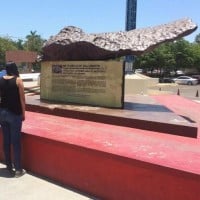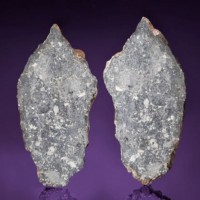Most Interesting Meteorites Found on Earth
Meteorites can be considered interesting for several reasons:- related to scientific findings
- chemical composition (esp. those with gemstones)
- age of the meteorite (the older, the better)
- witnessed / documented fall
- mass
- appearance
- interesting stories
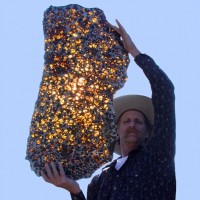
It was found in China and as of 2019 it's the Most Expensive Meteorite Ever Offered Up - €1.7 million.
It contains peridot - a yellow/green gem (the bright spots you see in the image). Peridot grains are quite large and are in a dark matrix of iron & nickel. This meteorite is thought to be 4.5 billion years old (the age of our planet). And it's pretty large as you can see.
This meteorite looks awesome. The guy is the photo is lucky because he got to hold that big thing. I really wish I had this meteorite.
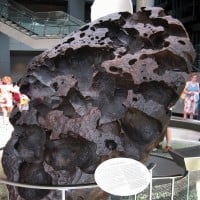
It's a very large metal meteorite - it weighed more than 16 tonnes when found in 1902 in Oregon, U.S. It consists of iron & nickel only. No gems.
It probably originated from the core of asteroids or planetesimals that collided with another object. Yes, I can tell this guy had a hard time during its space travel. I mean, look at it... its appearance is striking, maybe even scary.
It's the 3rd most expensive meteorite ever offered up - €851,000.
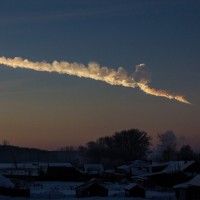
It fell in 2013, in Chelyabinsk, Russia. There are several interesting things:
1) Its fall was witnessed.
2) Its fall was documented - there are many pictures and videos (you see one of them).
3) One thing is sad though: it is the only meteorite to have injured large numbers of people - over 1,500 people needed medical treatment that day.
4) Its explosion over Chelyabinsk was documented - the explosion generated a bright flash, produced a large shock wave, hot cloud of dust and gas, and many surviving small fragmentary meteorites.
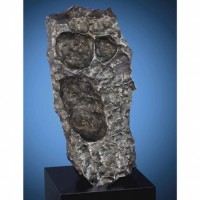
There are 33 fragments of the meteorite found in 1838 in Namibia. It's an iron meteorite composed of an iron-nickel alloy (92% iron/Fe).
In the image you see one of the fragments and I had a reason to choose this particular fragment - it resembles Edvard Munch's famous painting "The Scream". This meteorite fragment can be confused with a modern sculpture on display in a gallery of modern arts.
It fell in Namibia in prehistoric times and has an estimated value of €280,000 (the 10th most expensive meteorite ever offered up).
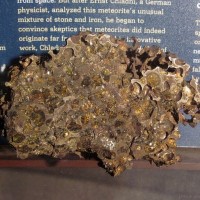
It's interesting for its high scientific value, gems and mass. It fell in Krasnojarsk, Siberia, Russia, and was the first pallasite meteorite ever found and studied. Pallasite is a stony-iron meteorite (a type of meteorite that often contains gems, usually peridot).
The Krasnojarsk Meteorite was detected in 1749, but its analysis began in 1772 thanks to Peter Simon Pallas. Pallas was a Prussian zoologist and botanist who worked in Russia. He was invited by Catherine II of Russia to become a professor at the St. Petersburg Academy of Sciences and he led expeditions to many Russian provinces.
In 1772, Pallas was shown a 680-kg lump of metal near Krasnoyarsk. The analysis showed it to be a new type of stony-iron meteorite. The Pallasite group of meteorites was named after him. This meteorite was used to demonstrate the reality of meteorite falls on the Earth, which were at the time considered as fairy tales by most scientists.
The meteorite's main mass of 515 kilograms (1,134 lb) is in Moscow, at the Fersman Mineralogical Museum, Russian Academy of Sciences. A slice of the meteorite is at the American Museum of Natural History.
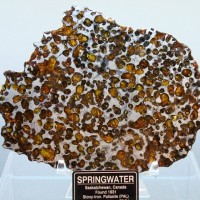
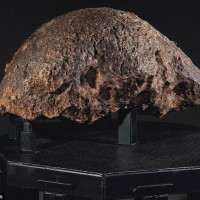
It is a stony-iron meteorite with gemstones (peridot). When cut and polished it shows yellowish olivine (peridot) crystals. It fell in Kansas, US, probably about 20,000 years ago.
The Brenham Meteorite has several fragments, and the largest one (the main mass) weighs 650 kilograms (1,430 lb). The main mass of the Brenham meteorite costs €896,000, the 2nd most expensive meteorite as of 2019.
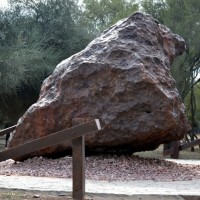
A large and old iron meteorite with many fragments found in Argentina. One of its fragments (Gancedo) is the 3rd largest meteorite on Earth. Another fragment (El Chaco) is the 4th largest meteorite on Earth (in the image).
The craters, containing iron masses, were reported in 1576 but were already well known to the aboriginal people living in the area. The craters' estimated age is 4,000-5,000 years. The crater field has at least 26 craters, the largest being 115 by 91 metres (377 by 299 ft).
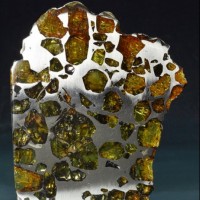
It's with large grains of gem quality peridot in a matrix of iron & nickel (in the image you see a slice of the meteorite and not the whole meteorite).
Esquel was found in 1951 in Argentina and weighed about 700 kg. Esquel was once part of a planet or other large body in our solar system that had a metallic core and a rocky mantle.
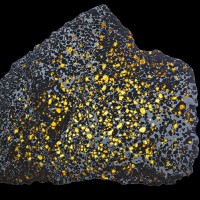
A stony-iron meteorite with the gem peridot, found in Chile in 1822. It's highly prized for its high concentration of beautiful olivine (peridot) grains.
One of its fragments (called Ahnighito) is the 2nd largest meteorite ever found (31 tons; iron). But a more interesting fact is that it fell in Greenland and Inuit living near the fragments of the meteorite have used the fragments as a source of metal for tools and harpoons since 1894.
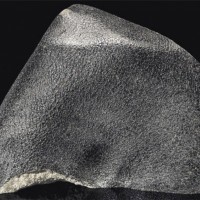
It is the largest meteorite from Mars discovered on Earth to date. It fell in Nigeria in 1962
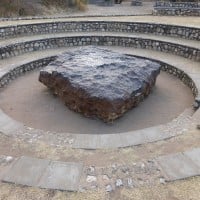
The largest meteorite of any kind on Earth, as of 2019. It was discovered in Namibia in 1920. It's composed of iron and nickel and weighs about 60 tonnes.
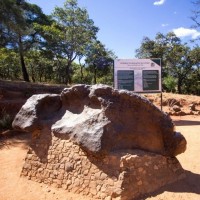
Its name sounds funny to me and the meteorite looks like an animal, perhaps a turtle. Mbozi is a large and heavy iron meteorite weighing about 16 metric tons, and as of 2019, it is the 7th largest meteorite on Earth. It was found in 1930 in Tanzania.
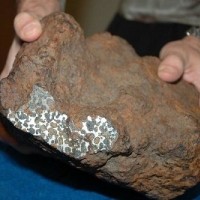
Another rare meteorite with gem peridot, found in Missouri, US. It's the 4th most expensive meteorite as of 2019.
